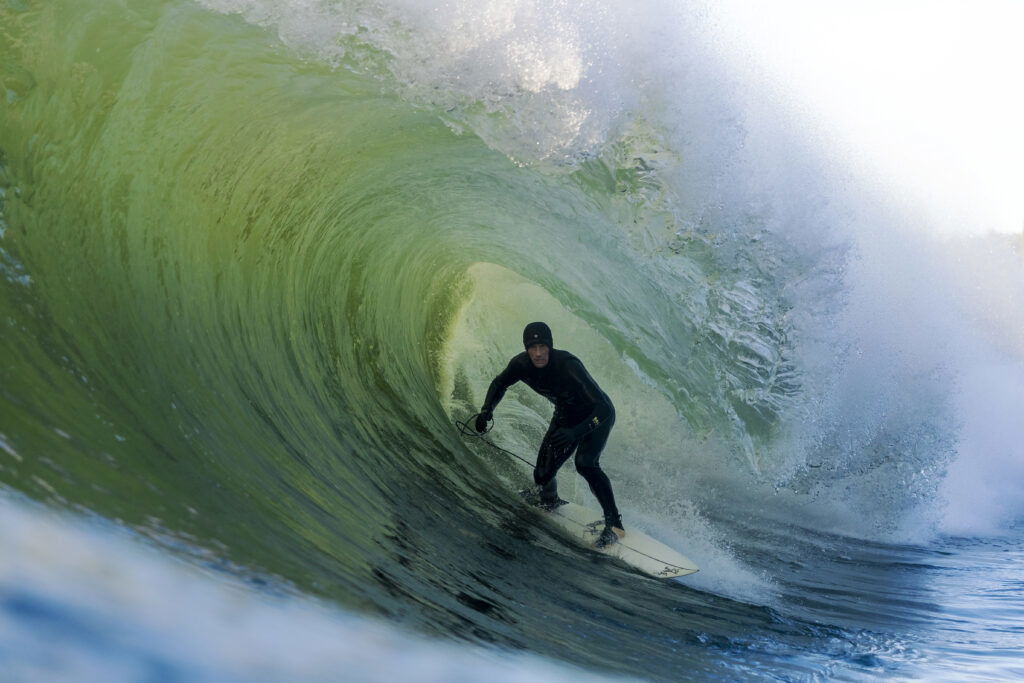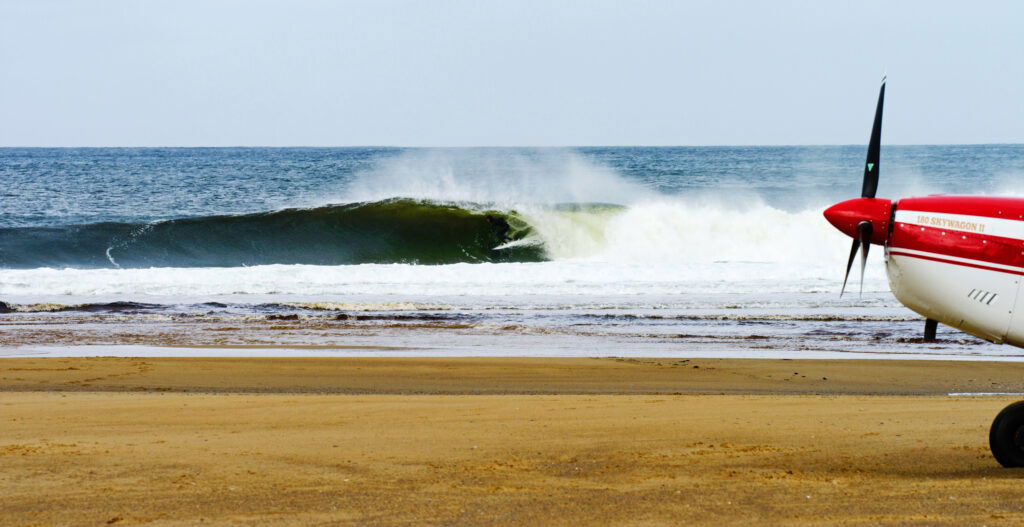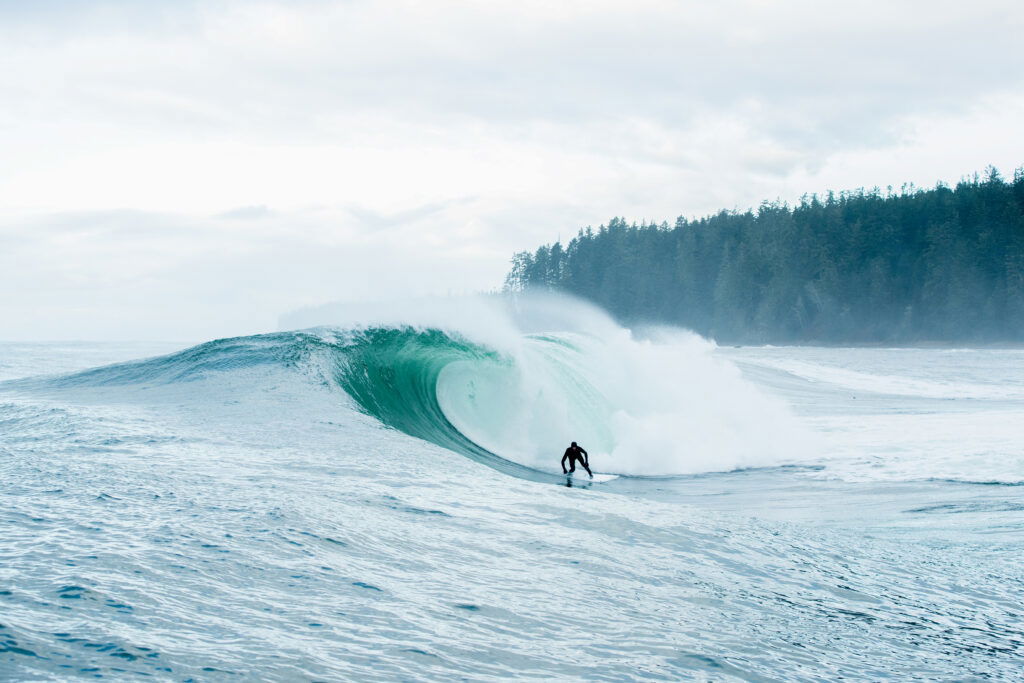30-Minutes Of Freshly Pioneered Waves In The Canadian Wilderness
“Some fisherman texted us a blurry photo of a wave kinda barreling. So we flew a plane out there.”
Nestled in along Canada’s southwestern corner, Vancouver Island’s emerald web of fjords and forest hosts a population of over 800,000 people, 12,000 black bears, 7,000 bald eagles, and hundreds of orcas.
With full exposure to the North Pacific’s barometric bakery and 2,100 miles of inlets, rivermouths, wind-warping headlands, and cobblestone shoals, the Island also holds potent wave pioneering potential.
And yet, in the two decades since Canada first filtered onto the mainstream surf periphery, it feels as though we’ve seen the same photos of the same waves with the same snowcapped mountain in the background.
“Canada had a moment in the spotlight maybe 10 or 15 years ago, and then the momentum really slowed down because we were seeing the same surfers at the same waves for a long time,” says Tofino based filmmaker Nate Laverty. “In particular, there are two waves that Pete [Devries] and I have surfed and shot for a long time, which you’ve probably seen tons of imagery from. Our rule for this film was that we wouldn’t go to either of those waves for a single swell.”
Creatures Of Habit is a 38-minute audiovisual delicacy, featuring Pete Devries, Reed Platenius, Dmitri Poulos, Cam Richards, Ryan Huckabee, and a handful of locals traversing absurd trajectories to document unseen waves.

“People want to surf what they know, they want to surf where they know the forecast,” says Nate. “The majority of the waves we surfed in this film were a total stab in the dark. We didn’t fully know what they’d be like, we can’t check them, there’s not even really buoys nearby. Big risks and hard to access.
“We had forecasts where we knew it was going to be good at our usual waves, but we went to other places we hadn’t surfed. It was always kind of a risk. Through the film you can tell that Pete is vibrating with nervous energy, because we don’t get good waves very often here. And when you know it’s going to be good and you’re going somewhere random, it’s kinda hectic,” laughs Nate.
As you’ll see, the process of uncovering virgin visions along Canada’s western precipice is more complicated than four-wheeling a few logging roads.
“In the opening segment, we flew a little over an hour in a Cessna to that beachbreak,” says Nate. “The beach landing was gnarlier than I thought. You don’t know if you can land on the beach until you swoop over it and do a couple of tests. You throw rocks out the window to see how firm the sand is. Then we had to fly through some narrow mountain ranges that can make your plane do crazy things. We had an updraft on our way back from that trip where the plane just randomly dropped a hundred feet, and Pete actually hit the ceiling of the plane
“We just heard there was a wave because some fisherman randomly texted Pete a super blurry phone photo of a wave kinda barreling. So we flew a plane out there,” he laughs.

The crescendo of the film comes in the final sequence, as Pete Devries approaches the consequential chess game of finding an entry at the Box’s murky Canadian cousin.
“The slab at the end, that one is a very complex series of driving six hours, trying to find a boat or a heli, and getting permits,” says Nate. “We had only heard rumors of that wave. We had seen some iPhone photos of a boog taking off, but had never seen him in the barrel. We heard of one guy who went with a big wave board and took off on the shoulder. Nobody really knew if you could get tubed out there.
“And then our good friend Noah Cohen was the first one I saw take a real crack at it on a small day. We saw one iPhone clip of a nice barrel he made, and we were like, okay, this wave is a real possibility. And then we just started trying to guess what the forecast could be. It faces a really strange direction. We took a bunch of guesses and started just going and looking at it when there was nothing there but a gurgle. We would do a long drive and a boat ride just to go look and see the formation of the reef and everything and get a read on it. I was so dedicated to the storyline of what we were doing. Finally one swell we pulled the trigger and took a risk.
“Pete didn’t even ride the real set waves because they had such a crazy ledge on top,” continues Nate. “We’re still not even sure if you can surf the bigger set waves without getting towed in. Pete has surfed a lot of slabs and it was still really tricky for him.”

The film took 15 months to film, and has already won a multitude of film festival awards from London to Oceanside to Florida.
“I don’t really mean to make it sound like we’re changing Canadian surfing, but my hope is that this film opens the door for the younger generation to go explore further,” finishes Nate. “Even making this film, I would say half the spots we identified that we wanted to go to, we didn’t even get to.”
And yes, they’ll be making another film soon.













